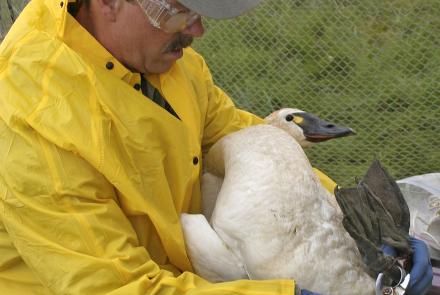Arctic Alaska a different kind of place
Slicing through the top quarter of the Alaska map, the Arctic Circle marks the boundary of perpetual light. North of the line, the sun won’t set on summer solstice.
But somehow the breezy, treeless tundra of Barrow has a more arctic feel than Fort Yukon, also poleward of the line but home to dense spruce forests and Alaska’s all-time high temperature of 100 degrees.
A more “ecologically sound” definition of the Arctic is any area with an average July temperature of 50 degrees Fahrenheit or less. Alex Huryn and John Hobbie wrote this in their book, Land of Extremes: A Natural History of the Arctic North Slope of Alaska.
While that definition applies to Adak, Shemya, Wales and a few other cool places south of the circle and excludes Umiat (with a long-term July temperature average of 54.7 degrees), it includes most other towns and villages in what most people consider Alaska’s Arctic. When plotted as a line, that temperature standard somewhat marks the northern limit of trees.
Huryn, a professor at the University of Alabama, Tuscaloosa, and Hobbie, with the Marine Biological Laboratory at Woods Hole, Massachusetts, have spent many hours on Alaska’s North Slope, a Nebraska-size region extending from the backbone of the Brooks Range to the pale salt water of the Arctic Ocean. Hobbie is a founding researcher of the Toolik Field Station.
Land of Extremes is full of reasons why arctic Alaska, in particular the North Slope, is a place like no other.
While driving north on the Dalton Highway and passing the final spruce tree in a narrow valley north of Coldfoot, people have contemplated why there are so few trees in the Arctic. The authors write that while there are several factors that contribute, cool summer temperatures are probably number one.
Abundant woody shrubs that don’t get much taller than a moose have the advantage of growing closer to the ground, where it is warmer. Hovering within the shrubs are a species no writer would omit from a book of Alaska fauna. Huryn and Hobbie wrote of the Toolik Field Station mosquito record: in 1994, a researcher there killed 278 with one slap. Extrapolating from the size of the man’s hand, the authors calculated that a naked person stranded on tundra in such conditions would die from blood loss in 22 hours.
“True flies” including mosquitoes make up 50 percent of insect species in North America’s Arctic. Beetles rule everywhere else on the planet, but up north four fly species exist for each beetle.
Bumblebees of the North Slope are sometimes active when the air temperature is colder than freezing. They pull it off by maintaining a body temperature warmer than a human’s, in part by the warmth generated by their bulging flight muscles. Some butterflies and moths instead depend on the sun to warm their flying machinery. On early summer days, moths and butterflies will cease flying when clouds block the sun.
Creatures that appear better suited for a land of eight months of winter include the snowy owl, with white plumage that traps body heat better than any bird except the Adelie penguin, and the arctic fox, which fattens up in summer and autumn with such vigor it can survive a month in winter without eating.
Caribou are probably the most visible of the large animals living on the North Slope. The authors calculated that one caribou exists for every square kilometer between the Brooks Range and the Arctic Ocean.
Caribou “were essential for the existence of humans” in the interior of the North Slope for thousands of years, the authors wrote. After both the Western Arctic and Central Arctic herds crashed from about 300,000 to 15,000 animals from 1890 to 1900, the Nunamiut Inupiat Natives began to abandon their camps in the foothills and mountains.
“By 1920 there were essentially no human residents in the interior of the North Slope,” the authors wrote. That area remained quiet until caribou herds recovered in the 1930s, and, in the late 1960s, the discovery of oil at Prudhoe Bay brought many humans northward.




